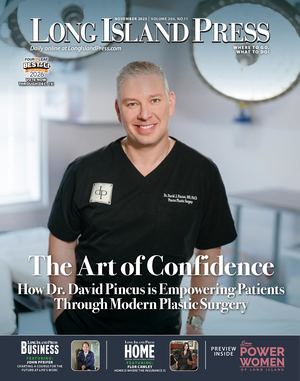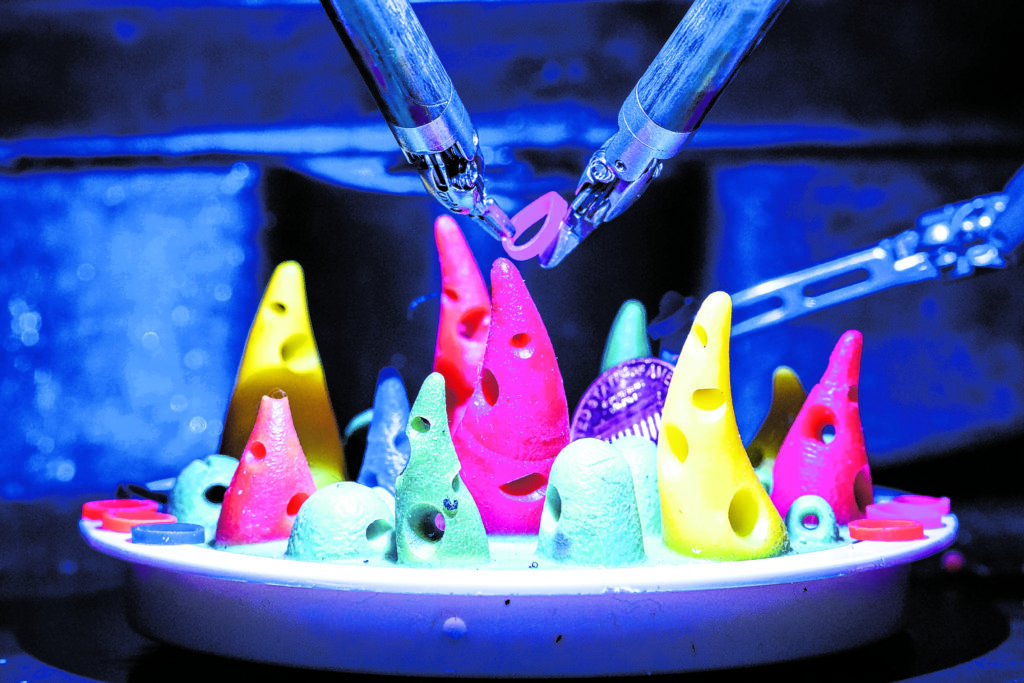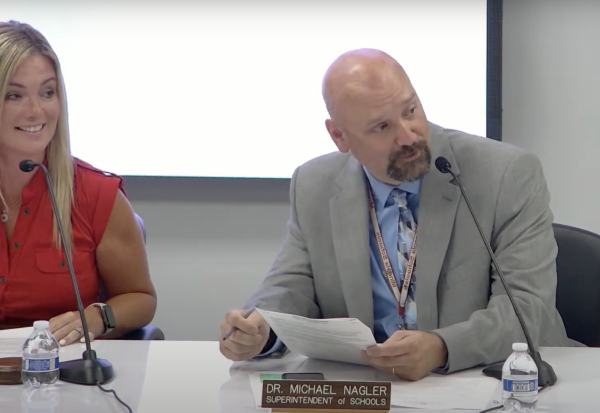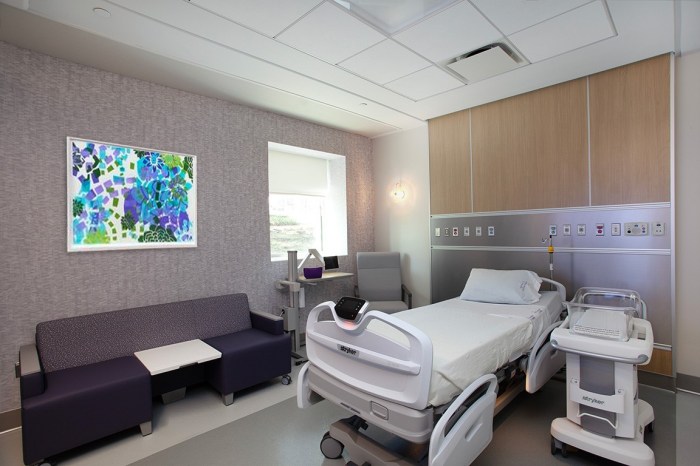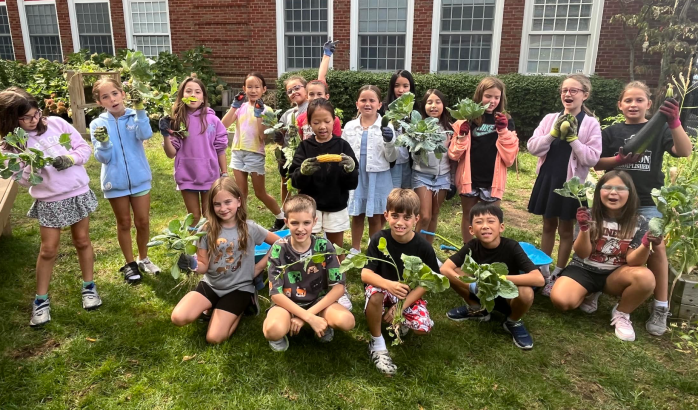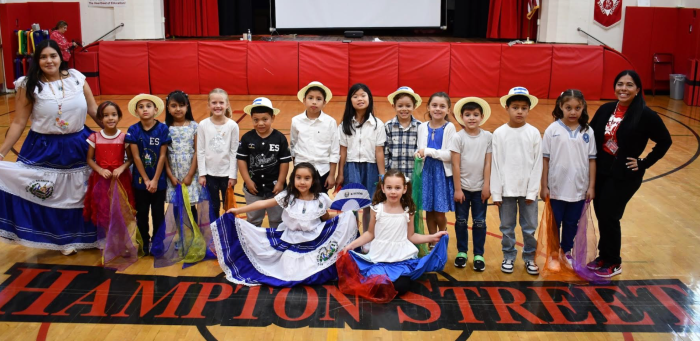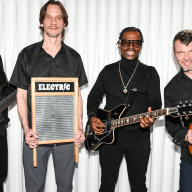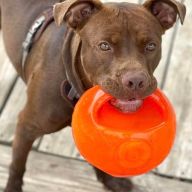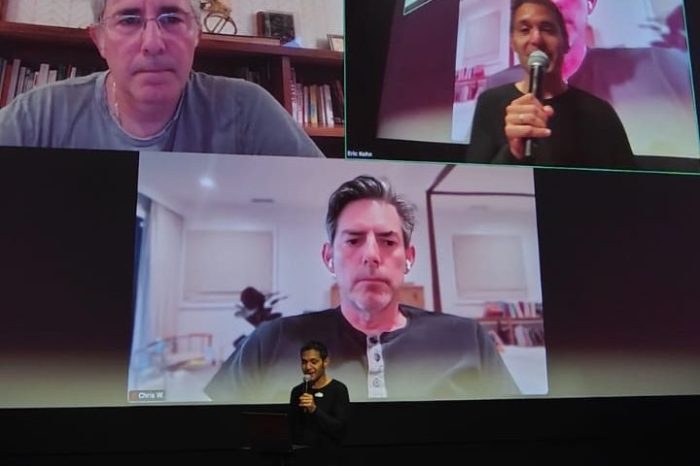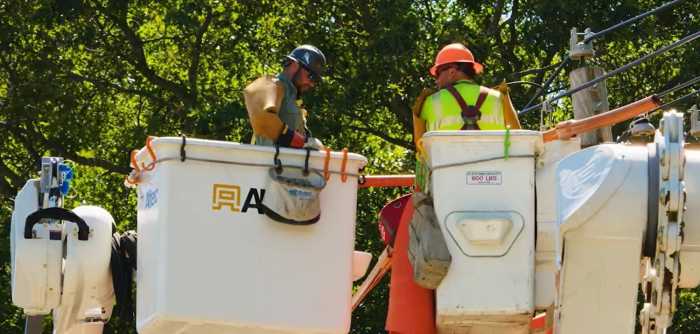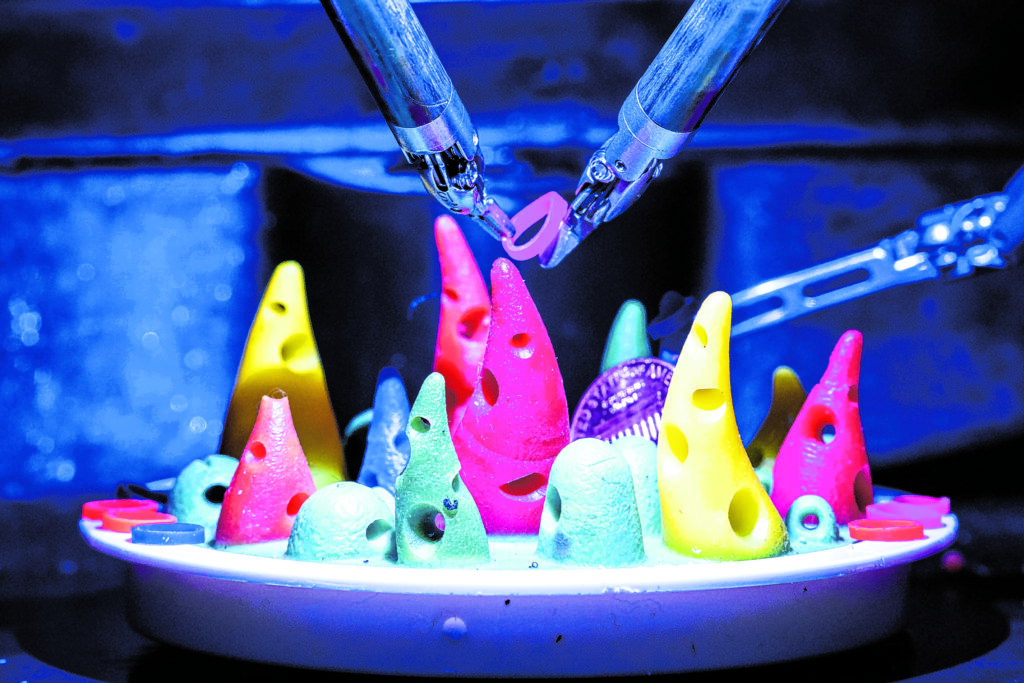
At the Donald and Barbara Zucker School of Medicine at Hofstra/Northwell, medical students are getting a chance to familiarize themselves with some of the latest in surgical robotics, and to prepare for advancements in tech still to come.
Over the past several weeks, second-year medical students participating in the school’s Surgical Skills Training Course (SSTC) have been practicing using the school’s da Vinci Surgical System, comprising multiple delicate, 100-percent hand- and human-controlled robotic arms.
The da Vinci system is now used in many hospitals’ operating rooms, where roughly 15 percent of surgeries now involve robotic tools. A recent Hofstra/Northwell release on the program explained, “The military, in a joint effort with the Stanford Research Institute, first developed robot-assisted surgery in the late 1980s, [and the] da Vinci Surgical System became the first robotic device approved by the FDA in 2000. Today, the da Vinci system is an innovative, state-of-the-art advanced instrumentation [that] works as an extension of a skilled surgeon by replicating the surgeon’s hand movements in real-time and aiding with greater visualization, enhanced dexterity, and greater precision.”
Harrison Labban, M.D. Candidate in the Class of 2025 at the Zucker School of Medicine, talked about the experience and implications of training with a surgical robot during a phone interview with Nassau Illustrated News. As someone who’s hoping to pursue surgical residency after med school, the SSTC course has been a key component of his and other would-be surgeons’ curriculum this year.
“The opportunity to work with the da Vinci robot has been really unique, and part of a larger program that is offered to us a second-year students, especially those of us considering surgical residency and career surgical fields,” Labban said.
“This is week 11 of a 12-week program, and we’ve been studying and practicing with attendings on various different types of surgical technologies. We started out with basic stuff like sutures, and things you do with your hands, and progressed to laproscopic technologies, which came around about 25 years ago.”
In the last few weeks of the program, he said, “We’ve been focusing on robotics big, the ‘big deal’ in the past decade or so.”
“It’s been fantastic, and puts us in a position that medical students in general aren’t normally in, and puts us in situations not only with exposure to those technologies but with attending surgeons: folks who are in the very top of their field at Northwell Health are spending three hours a week with us, coaching us through learning how to perfect certain skills.”
“That’s a really unique experience for someone in my position,” Labban explained.
“Right now I’m learning about anatomy and pathology as a medical student, and we might talk about a certain structure in the abdominal cavity and whether you might need to do surgery, but we don’t think a lot at this stage about why we might need to use a certain instrument to reach that structure, why it might be challenging, or how robotics might make it easier … It’s an incredible way to start putting everything together, and start thinking more like a doctor than like a student.”
Labban also pointed out that getting a head start on learning not only a particular robot but also how to transition to robots and other, as yet unknown technologies gives him and his peers a cutting edge.
“Anything, in theory, that can be done laparoscopically can be done robotically, and we’re in the process, as with every medical technology, of transitioning to the use of robotics. So you can imagine that there are many, many fantastic surgeons who have been doing certain procedures for 10 or 20 years who’ll need some time to transition,” he explained.
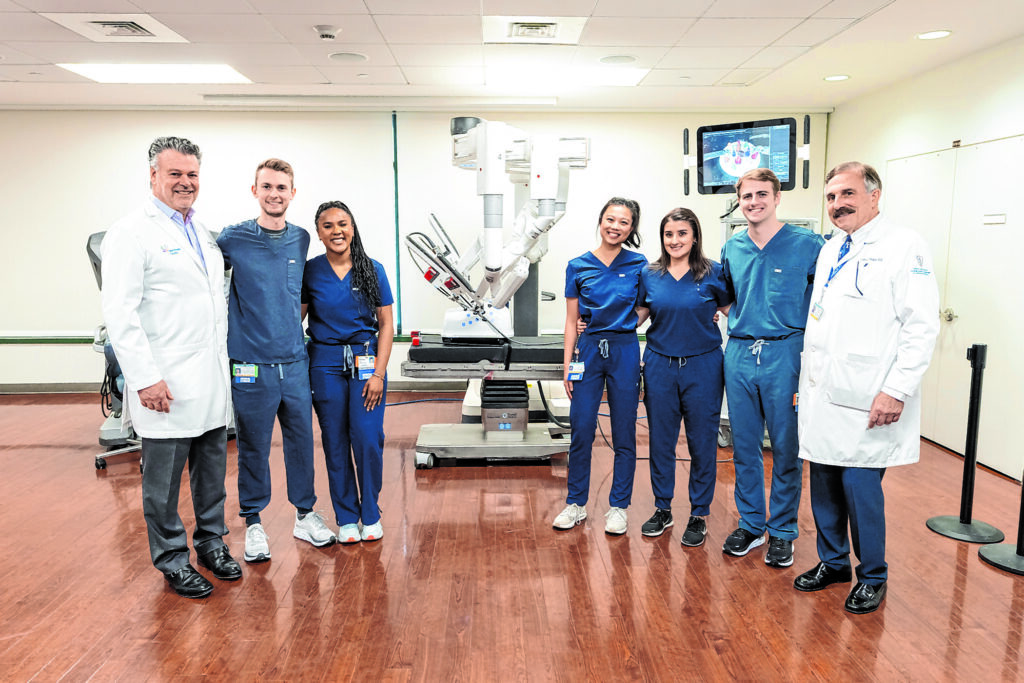
“What you’re seeing a lot now are general surgeries [employing] robotics, including a lot of what we call ‘bread and butter’ surgeries: removal of the gall bladder, removal of the appendix, hernia repair, and things like that are routinely being done with robots. About 15 percent of all surgeries are being done with robots. With some of the longer duration, more complex surgeries we’re not there yet, but it doesn’t mean it can’t be done; we’re just transitioning now.”
“That’s one of the reasons I think it’s so important to have students working on that kind of technology, because that puts us ahead of the curve.”
When asked whether he’s previously spent much time with robotics, Labban said, “I have some exposure to robotic technology from my past experiences in labs in college, but I also just think my generation is more comfortable with robots. I mean, our vacuum cleaners are robots, and we’re very used to that now. And when we think of surgery, we don’t think of open surgery; we think of laproscopic surgery, which can be very frustrating in terms of limits on your mobility.”
Dr. David L. Battinelli, Dean and the Betsey Cushing Whitney Professor of Medicine at the Donald and Barbara Zucker School of Medicine, told Nassau Illustrated News by phone that overall his students have clearly risen to the challenge and embraced the technology (with dexterity, even). He also emphasized the importance of getting students interested in pursuing surgical careers into robotics practice as soon as possible.
“Traditional medical schools really don’t spend too much time on early differentiation of students with enhanced clinical opportunities. Probably for a variety of reasons, not the least of which might be limited access to the resources necessary, such as faculty time, hospital access, and technology. There’s also the other barrier which is their ideology or pedagogical ideology,” Dr. Battinelli noted.
“At our school, we have a fully integrated science curriculum for all four years [of study]. We also put in hundreds and hundreds of clinical hours in the first three years, and our students excel in science assessments.”
“Most people don’t get an opportunity to train on a robot until their advanced residency training, so this is two, three, four years earlier,” he added.”
“These are advanced students who are totally capable of learning this technology given the opportunity.”
Labban noted that exercises with his school’s da Vinci system have left both a good and lasting impression on him with regard to the impact of robotics for improving surgeries, as well as surgeons.
“The goal is to be able to manipulate very small, pliable, lightweight objects in a small space with high precision,” he said. “That’s going to require the ability to grasp objects a certain way, pass objects between hands, have wrist articulations. Things that are difficult to do manually, if you picked up a pair of tweezers or forceps, are actually easier to do on the robot, in my personal opinion.”
